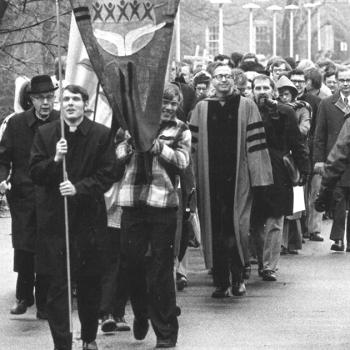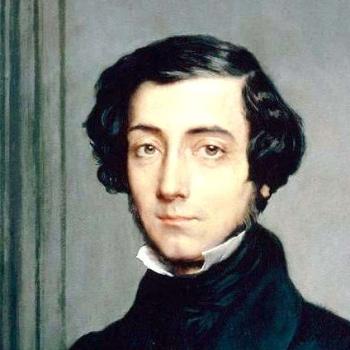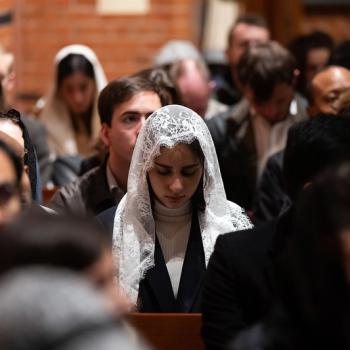The Church Growth Movement led to a surge of megachurches–congregations of 2,000 and more–built on the principle of updating Christian worship and church practices to make them more attractive to people today.* But now a number of megachurches–including some of the most trend-setting–are offering liturgical services and are bringing back elements of traditional Christianity, such as creeds, the church year, and other historic practices.
So reports Anna Keating in her article for America, a Jesuit publication, entitled Why Evangelical megachurches are embracing (some) Catholic traditions.
She doesn’t quite grasp all of the issues she writes about. Roman Catholics do not have a monopoly on liturgical worship, creeds, the church year, or historic Christianity–as Lutherans and Anglicans (two of the largest Protestant movements), among others, would demonstrate–so what she describes as “Catholic” applies only in the “universal” sense of the Apostles’ Creed. Interestingly, she seems rather taken with the casual “seeker-friendly” style of megachurches and is sympathetic with the charismatic movement.
But what she reports is fascinating and important for Christians on all sides of the church growth controversies–including veterans of the “worship wars” that tore many conservative denominations–to understand.
The pioneering New Life Church in Colorado Springs, Colorado, with over 10,000 members, now incorporates “more traditional liturgies,” uses the Nicene Creed as its confession of faith, offers Communion every Sunday, and follows the historical church year.
Willow Creek in suburban Chicago, perhaps the most influential megachurch with over 24,000 members, now offers a “traditional liturgical-style” worship service.
The Village Church in the Dallas/Ft. Worth metroplex with 14,000 members, is a Southern Baptist congregation that follows the liturgical calendar, recites the Apostles’ Creed, and fasts during Lent.
Epiphany Church in Lower Greenville, Texas, employs incense in its worship services, uses the historical lectionary, and historical prayers.
Mars Hill in Grand Rapids, Michigan, not only uses the Nicene Creed, the church year, and weekly communion, but it has also scrapped the multi-media screens and concert-hall design that characterize most megachurches in favor of an altar and a cross.
[Readers, if you know of similar examples, or attend such a church, please tell us about it in the comments.]
Why this reversion away from “new ways of doing church” to historical Christianity?
“For some megachurch pastors,” says Keating, “the move toward liturgy and tradition is about a desire to go deeper in forming their congregations in faith.” She interviewed the pastor of New Life Church, who has become a serious student of historic Christianity and who implemented the changes after the previous celebrity-pastor was brought down in a sex scandal. In its trauma, the congregation recognized its need for a deeper, richer faith. I suspect something similar happened at Willow Creek, which has also struggled with a sex scandal.
Another reason cited in the article is that much of the public has become burned out with contemporary evangelicalism, which has lost much of its former allure. Traditional Christianity and traditional churches, ironically, are “different” and have become an attractive alternative.
Another reason Keating says is simply an extension of the Church Growth Movement’s emphasis on marketing. “Megachurches are big businesses with lots of people on payroll, and part of the change is about marketing, rebranding, consumer choice and retention,” she says. “You want a contemporary service? We offer that. You want traditional? We have that too.”
While we traditional Christians should applaud these developments–especially those of us in traditional churches that, in some cases, threw out their historic liturgy and practices in hopes of becoming a megachurch–we can also see the limits of some of these changes. The Church Growth Movement has always taught that style is separate from substance, that the style doesn’t really matter, so that orthodox teaching can be communicated in any style that “works” in connecting with people. The problem, as artists and media experts know, is that “the medium is the message,” that style shapes and even determines what substance is being conveyed. Style and substance has to work together; more to the point, to convey a particular message, the substance has to determine the style.
If the liturgy, creeds, and other traditional practices are nothing more than trappings, apart from or even in contrast to the church’s theology and teachings, the style/substance problem will not have changed. On the other hand, just as a contemporary style works against orthodox substance, a more orthodox style will work to communicate a more orthodox substance, whether that is the intent or not. And often, to give credit where credit is due, this is the intent.
At any rate, traditional, orthodox churches can take heart from these developments that liturgy, creeds, and historical practices are not necessarily “obstacles” to growth, as they have been told. Indeed, they can be profoundly compelling for casualties of contemporary Christianity.
*Note: There is no reason why very large congregations, including those with more than 2000 members, cannot be orthodox and liturgical. I have attended many of those both as a visitor and as a member. By “megachurch,” I do not mean such large congregations. Just those that have become large by following church growth innovations. That some of those are returning to traditional practices is a commentary on those innovations.
Photo: New Life Church, Colorado Springs, aerial photo by Adammeliski [CC BY-SA 4.0 (https://creativecommons.org/licenses/by-sa/4.0)] via Wikimedia Commons

















